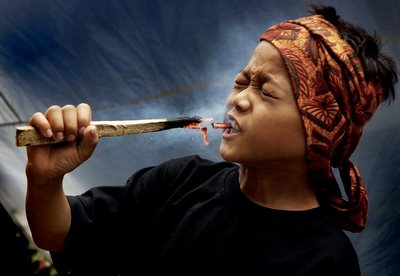

Tangkuban Parahu or Tangkuban Perahu is one of the mountain located in the province of West Java, Indonesia. Approximately 20 km to the north of Bandung, with a lush carpet of pine trees and tea plantations in the surrounding mountains have Tangkuban Parahu high altitude 2084 meters. The shape of this mountain is the center of eruption Stratovulcano who moved from east to west. Rock type issued by the eruption of lava and most of the sulfur, a mineral which is issued sulfur sulfur, a mineral that was issued when the mountain is not active sulfur vapor. Boat Tangkuban area managed by the Corporation of Forestry. The average temperature is 17oC daily at noon and 2 oC at night.
Parahu Tangkuban have Dipterokarp forest hill, forest Upper Dipterokarp, Montane forest, and forest or forest Ericaceous mountain.
Legend of the local people
The origins of Parahu Tangkuban legends associated with Sangkuriang, narrated in love with her mother, Dayang Sumbi. To thwart her intentions to marry her, Dayang Sumbi Sangkuriang proposed requirement to make a boat overnight. When his efforts failed, Sangkuriang angry and kicked the boat, which landed upside down. This boat is then formed Tangkuban Parahu.
This Parahu Tangkuban including active volcano whose status is being watched by the Indonesian Directorate of Volcanology. Some kawahnya still showed signs of this mountain activity. Among the signs of this volcano is the emergence of sulfur gases and the sources of hot water on her foot of the mountain of them is in kasawan Ciater, Subang.
The existence of this mountain topography and shape of the Bandung basin with hills and mountains on each side to strengthen the theory of the existence of a lake (crater) is now a major area of Bandung. It is believed by geologists that the plateau region Bandung with altitude approximately 709 m above sea level is the remains of ancient volcanic eruptions known as Mount Sunda and Parahu Tangkuban Mountain is the remnant of ancient Sundanese are still active. This phenomenon can be seen on Mount Krakatau in the Sunda Strait area and Ngorongoro Conservation Area in Tanzania, Africa. Sangkuriang legends so that the region's public story is believed to be a public document sunda Mountain area early to the event at that time.
Video Mountain Tangkuban Parahu













